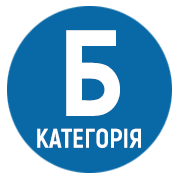COMPETENT APPROACH IMPLEMENTATION IN THE PROFESSIONAL TRAINING OF FUTURE TRANSLATORS
DOI:
https://doi.org/10.25128/2415-3605.17.4.13Keywords:
competent approach, competence, educational communicative environment, blended learning, future translatorAbstract
The peculiarities of using blended learning as a form of implementing a competent approach in the professional training of future translators are under consideration. The professional competence of a future translator is considered as the quality of a person, which characterizes personality integration level with both professional and various social environments, the entry into which requires fulfilling all sorts of social roles. It is stressed that nowadays the peculiarity of the educational process in the university lies in the fact that twothirds of the academic activity is allocated to the students’ independent work, thus the use of blended learning is becoming a topical issue. Its basis is integration of traditional and innovative (electronic) forms of education with the constant growth of information and communication technologies, as well as electronic resources. The condition for the competent approach implementation in the educational process of a higher educational institution is the creation of an educational communicative environment. It is a complex systemic phenomenon based on subject-subject relations between all participants of the educational process and presupposes such training organization when it occurs directly in real or simulated professional and communicative activities. The purpose of the educational communicative environment during the professional training of future translators is their professional and communicative development, which reflects progressive changes in the ability to build a coherent statement; development of listening, reading and writing; the nature of the interaction of all types of speech activity; development of speech mechanisms; development of linguistic means of speech activity on the basis of expanding vocabulary and linguistic rules assimilation; development of ways of forming and formulating thoughts and their conscious differentiation for different communication conditions. Solving problems in various communicative situations students master certain ways of action, the result of such process is their professional and communicative development. Creating an educational communication environment involves the use of various teaching methods. Active methods of teaching are characterized by the fulfillment by students of independent work various creative tasks. Interactive methods through electronic training courses, conference calls, individual e-mail counseling, chats allow students to interact actively in the learning process, to gain new knowledge and to organize joint activities from a separate interaction to broad cooperation.
References
Балл Г. О. Парадигма діалогу і проблеми прилучення до наукової культури / Г. О. Балл // Професійна освіта: педагогіка і психологія: Українсько-польський щорічник. – Київ; Ченстохова, 1999. – С. 335–347.
EMT expert group. Competences for professional translators, experts in multilingual and multimedia communication. [Електронний ресурс]. – Режим доступу: https://ec.europa.eu/info/sites/info/files/emt_competences_translators_en.pdf.
European Quality Standard for Translation Service Providers EN-15038:2006. [Електронний ресурс] – Режим доступу: http://qualitystandard.bs.en-15038.com/.






